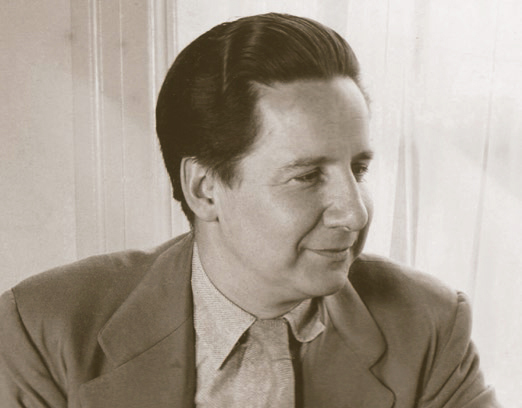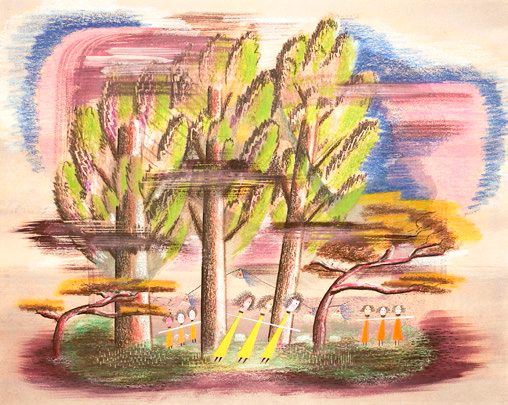Jewels of the Earth
 |
 |
|
|
 |
 |
 |
|
|
For an artist used to living hand to mouth, saying no to a paying gig is a big deal, especially if it's with a major cultural institution. But in 1952, at age 39, Milton Cavagnaro did it—twice.
And on top of that, he'd also stepped down as 'prime member' in a San Francisco design firm whose founders included the famed industrial designer Ruth Gerth.
When the California College of Arts and Crafts heard Milt had quit teaching at the California School of Fine Arts (today the San Francisco Art Institute), the Oakland school asked him to join their faculty.
The well-respected CCAC was where Cavagnaro had earned a degree in secondary education in the early 1930s. The School of Fine Arts was at its height in the early 1950s, with such history-making artists on staff as Richard Diebenkorn, David Park, and Milt's lifelong friend, Ansel Adams.
But Milt was through teaching. "For the time being, he wants to spend all his time on his present projects, and we have been so fortunate that many shops all over the country are responding so well to his things," Milt's wife and fellow artist, Mayreece, replied to CCAC. "Teaching again may be a consideration later on…but right now he has a million ideas to get out of his system."
"We have a shop here in Marin County and have really found quite a peaceful and creative way of life in the midst of a hectic world," she went on.
Cavagnaro (1913-1993), a graphic designer, painter, jeweler, and creator of 'mass-produced items,' was finally working full time as what would be called today a 'maker.' His studio was in the basement of what his son David calls their "tiny cracker box house," in Tam Junction, on the lower slope of Mount Tamalpais.
From the late 1940s through the 1950s, Cavagnaro turned out custom jewelry, pendants, earrings, necklaces, cufflinks, and more, including freestanding figurines that suggest ethnic art or creatures from another world.
His mass-produced items included rectangular salt-and-pepper shakers and the quirky 'Eega Reminder Bird,' described by the Detroit News in 1949 as "made of wood and wire and…designed as a humorous desk accent. There's a slot in its mouth for memos."
These provided "a lot of his bread-and-butter income during the 1950s," David says. Paintings, with which Milton made his mark in the late 1940s, got dropped.
Although Cavagnaro's career as an artist was short and never earned him much, he managed to create a style all his own.
His jewelry suggests ethnic fetish objects, often-quizzical figurines. There are delightful linear designs, classic 1950s amoeba shapes, and subtle textures and colors. Some are miniature mobiles. The pieces make a virtue of humble materials, and are beautifully crafted.
You can see in Milt's paintings Surrealist biomorphism and automatic drawing, Chinese ink wash paintings, the cityscapes of Stuart Davis, outsider art (scholar on mid-century arts and design Steve Cabella says Milt's work anticipates Keith Haring's), and Jackson Pollock.
It's easy to see why Milt believed he could succeed as a solo artist—and why he would choose to do so away from San Francisco, in the shadow of a mountain.
Since he began showing his paintings in San Francisco in the early 1940s, reviews (though not sales) had been good.




